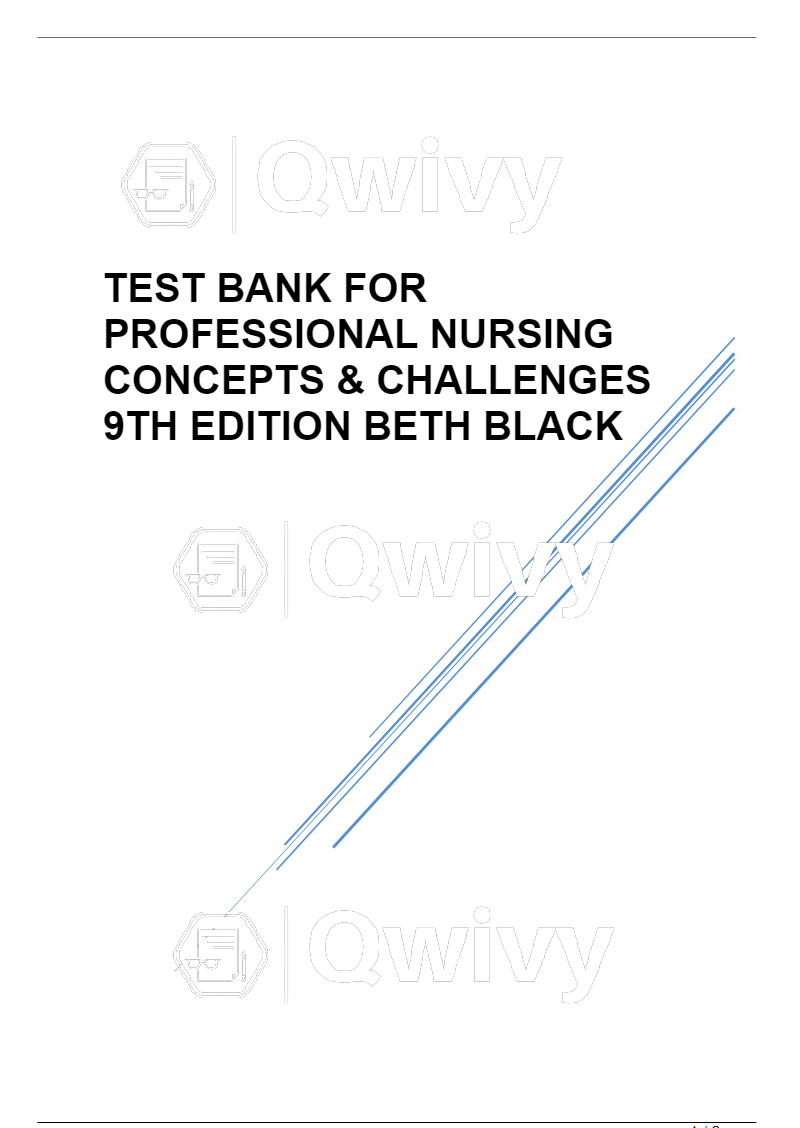
JK
[COMPANY NAME] [Company address]
TEST BANK FOR WHAT IS LIFE A
GUIDE TO BIOLOGY WITH
PHYSIOLOGY 3RD EDITION
PHELAN
1 / 3
Test Bank to accompany Jay Phelan’s What Is Life? A Guide to Biology with
Physiology, Third Edition
© 2015 by W. H. Freeman and Company. All rights reserved.
Chapter 2
Chemistry
Multiple-Choice Questions
1. An atom of iron has the atomic number 26. This means that it has:
a) 52 protons.
b) 13 neutrons.
c) an atomic mass of 26.
d) 26 protons.
e) 13 electrons.
Answer: d
Section: 2.1
Bloom’s level: 1
2.
What is missing from this cell of the periodic table?
a) the atomic number for nitrogen, 6
b) the atomic number for nitrogen, 14
c) the atomic number for nitrogen, 28
d) the atomic number for nitrogen, 8
e) the atomic number for nitrogen, 7
Answer: e
Section: 2.1
Bloom’s level: 1
3. Carbon-14 has the same:
a) atomic number and atomic mass as carbon-12.
b) atomic number and, therefore, the same number of neutrons as carbon-13.
c) atomic mass as both carbon-12 and carbon-13.
d) number of protons but more neutrons than carbon-12.
2 / 3
e) atomic mass and, therefore, the same number of neutrons as carbon-12.
Answer: d
Section: 2.1
Bloom’s level: 3
4. The four most abundant elements in living organisms are:
a) carbon, nitrogen, oxygen, and calcium.
b) carbon, nitrogen, potassium, and oxygen.
c) sodium, nitrogen, carbon, and silicon.
d) hydrogen, nitrogen, oxygen, and carbon.
e) carbon, hydrogen, nitrogen, and phosphorus.
Answer: d
Section: 2.1
Bloom’s level: 1
5. __________ is the smallest chemical unit of a type of pure substance.
a) A cell
b) A molecule
c) An amino acid
d) An atom
e) A proton
Answer: d
Section: 2.1
Bloom’s level: 1
6. All matter on earth, both living and non-living, is made up of:
a) cells.
b) DNA.
c) carbohydrates.
d) phospholipids.
e) atoms.
Answer: e
Section: 2.1
Bloom’s level: 2
7. Of all the elements that occur on earth, how many are found in your body?
a) 116
b) 4
Powered by qwivy(www.qwivy.org)
3 / 3
| Version | 2021 |
| Category | TEST BANK |
| Pages | 26 |
| Language | English |
| Comments | 0 |
| Sales | 0 |












{{ userMessage }}





